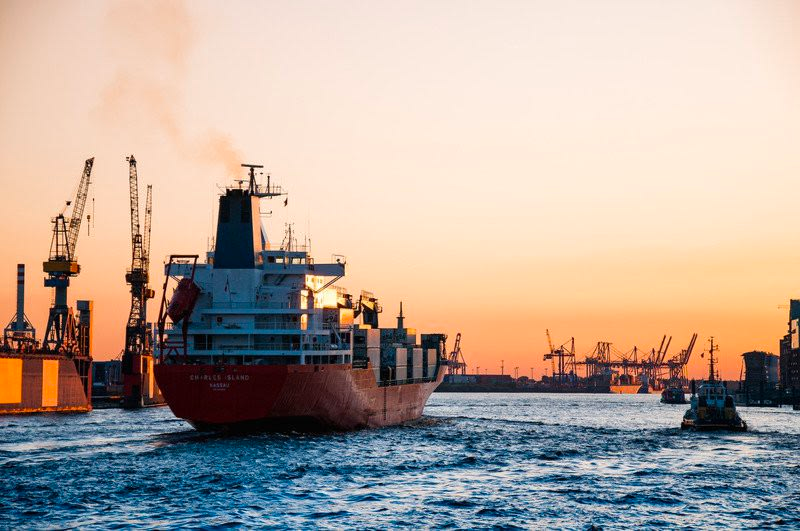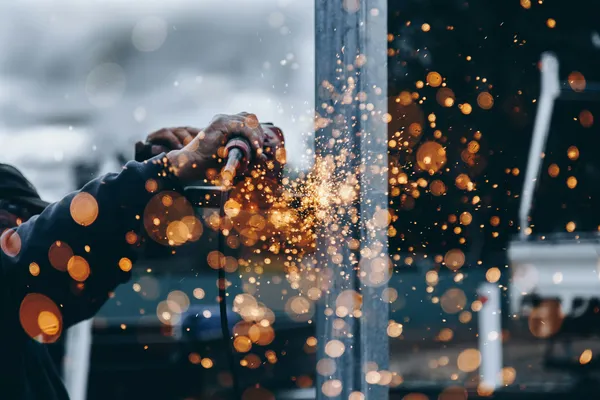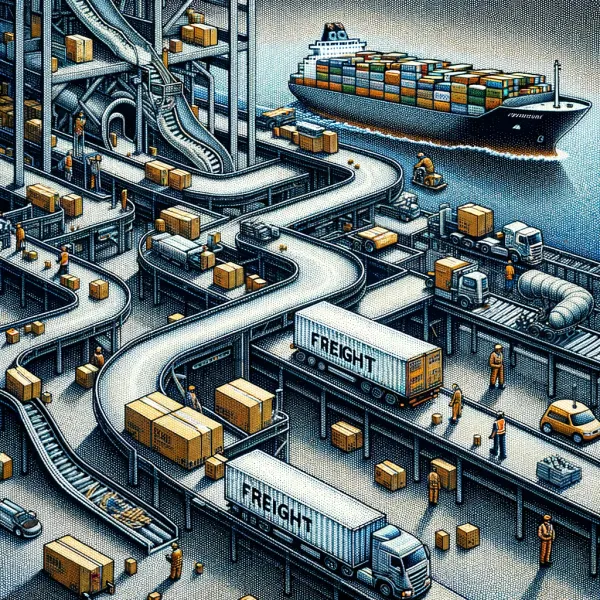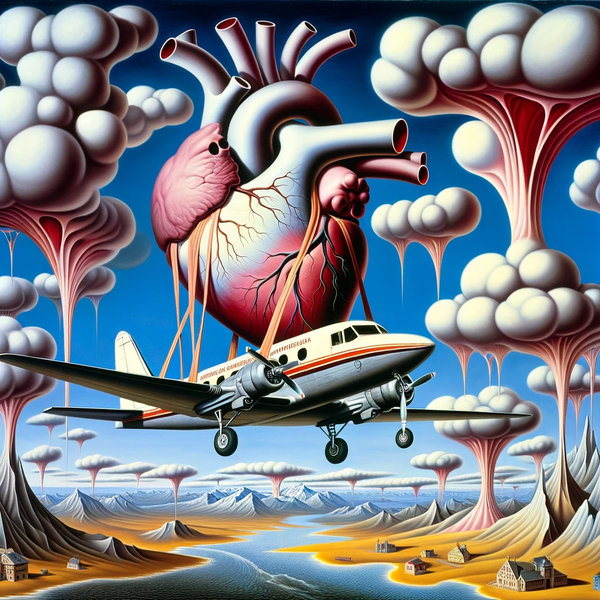
The Environmental Impact Of Maritime Freight
Written by Kenneth Jones, 2019-05-06
The cargo shipping industry is massive. With the direct gross output of the industry totaling $183.3 billion, and with a compensation of $27.2 billion to the 4.2 million individuals directly employed by the industry, there are definite benefits to our global marketplace. Cargo transported through this industry equates to about two-thirds of total global trade, totaling $4 trillion worth in goods. Container shipping has made shipping cheap, as it lowered freight bills and saved time. However, this massive industry comes at a cost. The environmental impact of container shipping calls for innovative solutions to the most pressing environmental problems associated with the shipping industry.
Emissions And IMO 2020
Due to the fuel used to power these cargo vessels, ships emit sulfur and nitrogen oxides, particulate matter, and carbon dioxide. Even though cargo ships are fuel-efficient, 80% of ships use heavy fuel oil, which is a more carbon-intensive type of fuel. These carbon emissions add up to approximately 3% of the total global greenhouse gas emissions, and are projected to increase to 20% of total global emissions by 2050 if we do not intervene. Nitrogen and sulfur oxide emissions from 2007–2012 represented 15% and 13% respectively of the global man-made emissions of these oxides.
Although those statistics may seem daunting, there have been many policies to avoid a greater negative impact. First, a recent meeting of the U.N. International Maritime Organization (IMO), with a total of 173 countries, agreed to cut shipping emissions by 50% by 2050. But how are they planning on doing this? The first step to reduce emissions is a sulfur cap. On January 1, 2020 a cap on the sulfur content of cargo ship fuel will go into effect (known as IMO 2020). This will decrease the sulfur limit from 3.5% to 0.5%. Although this will cost a maximum of $30 billion, it will also result in reducing sulfur, particulate matter, and carbon emitted by cargo shipping significantly.
Next, making ships increasingly energy efficient will help to decrease air emissions from cargo shipping. Since 2011, an Energy Efficiency Design Index led to the adoption of energy efficiency standards for newly built ships. Any ships built in 2013 or later are required to meet increasingly stringent fuel standards. These standards would help ships to reduce the amount of fuel they consume through new designs, reducing vessel speed, and building larger ships that can carry more cargo, therefore making ships more energy efficient per unit of cargo carried by the ship.
It has also been estimated that through the use of new technology, alternative fuel, and renewable energy sources, the industry could utilize fuel without carbon by 2035 according to the Organization for Economic Cooperation and Development. Below are some of the companies that are moving in this direction:
Methanex, which produces marine grade methanol. This cost effective alternative fuel reduces emissions of sulphur oxides (SOx) by 99%, nitrogen oxides (NOx) by 60%, and particulate matter by 95%. These drastic decreases in emissions come from the fact that methanol is a naturally occurring gas and can be produced from renewable sources such as biomass and recycled carbon dioxide, as well as anything derived from pants. Unlike most alternative fuels, methanol is one of the top five chemical commodities shipped around the world annually. Meaning, that it readily available at most ports and its prices are typically lower than other fuels.
IPCO Power, has designed an FID Injector that creates a stable water in fuel emulsion. This process adds distilled water to fuel onboard the vessel and creates a new fuel that has a more effective combustion. This higher efficiency fuel means lower fuel consumption, reduced NOx, HC, and PM pollutants, and will keep engine systems and scrubbers cleaner for longer.
Eco Marine Power, is a Japan-based company that is looking for innovative ways to completely remove fuel consuming engines from vessels. Over the last few years, the company has been experimenting with the idea of solar panels that capture the power of the sun as well as energy from wind. These panels are as thin as cardboard and flexible like plastic. This new design is expected to cut emissions by up to 10%, which is around four tons of fuel saved every day on a large cargo ship.
Through researching alternative fuels and propulsion systems, developing energy efficiency standards, creating energy efficient designs for new ships, and working on innovative technology to reduce emissions, the shipping industry is continuously working on decreasing the negative impact it has on the environment.
Vessel Discharges
Large cargo ships discharge ballast water, bilge water, gray water, and black water, all of which have the ability to decrease water quality, negatively impact aquatic environments, and increase risks to public health. Although ships discharge these at rates that fit with both international and national standards, they still pose an environmental threat.
Gray water is water from the accommodation areas of ships including the shower and sink, laundry, and galley, whereas black water is sewage that contains feces and urine. Gray water can only be released from ships at least 1 mile from land or people in water, and 3 miles from an aquaculture lease. Bilge water is water that contains oil, and must be properly separated before being discharged. International agreements have required ships to have an Oil Water Separator to limit bilge water oil content to less than 15 ppm. These are all regulated through the EPA’s Clean Water Act National Pollutant Discharge Elimination System Program, and created a vessel permitting program which contains federal standards for managing vessel discharge. Below are a few of the companies who are helping carriers meet EPA standards and clean up the discharge that their vessels produce.
Alfa Laval’s “PureBilge” is a high speed centrifugal oily water separator that is able to reduce oil-in-water content to less than 5 ppm. This system is relatively smaller than most and can fit into almost any engine room. This separator incorporates a fully automated, computer based platform that constantly monitors water to oil levels to help carriers avoid any EPA or IMO fines.
Genoil, is another company focused on helping vessels stay up-to-code with environmental laws and standards. Their “Crystal Sea Separator” is an automatic system that requires no filter or maintenance. It is also able to meet the gold standard of less than 5 ppm discharge levels, and can be used for a myriad of different applications such as fuel spills. Genoil has also established service centers all around the world, so vessels can make sure that their systems are constantly operational.
Wartsila, and their “Super Trident” sewage treatment offer a cost-effective and safe answer to the disposal of waste at sea. The system is optimized for black and grey wastewater flows, and can be implemented into a vessel’s preexisting water treatment infrastructure. These compact systems can be installed between decks, and make outgoing water safe for release into the ocean.
Invasive Species
Aquatic invasive species are plants, animals, and pathogens that live in the water. They are not native to the area, and may flourish in the new environment they have been introduced into. They have been transplanted to these new environments by a variety of things, but shipping is one of the causes. Invasive species can cause ecosystem damage. The damages and costs of controlling invasive species is over $9 billion annually. These organisms can cause public health issues through toxic dinoflagellates and cholera bacteria. The way in which invasive species are transferred is through the discharge of ballast water from vessels and from hull fouling.
Ballast water is water carried in ballast tanks of ships, as it helps to improve a ship’s stability and balance. It is taken into the ship and released when cargo is loaded and unloaded, and when there is poor weather in order to gain increased stability. When water is taken up in one area and discharged in another area, the transfer of nonnative species can easily occur. Every hour more than 2 million gallons of ballast water are released into U.S. waters, and over 3,000 marine species travel around the world in ballast water daily.
The IMO, U.S. Coast Guard, and EPA regulate the discharge of ballast water in order to decrease the environmental impact caused by invasive species. The IMO has an environmentally protective numeric standard that a ship’s ballast water must be treated before it can be discharged, and has an implementation schedule for treatment systems in ships, ballast water management plans, requirements for sediment removal, and guidelines for new treatment technology. The Coast Guard created a federal treatment standard for cargo ships within U.S. waters that follow the standards presented by the IMO, which the EPA also adopted.
The second way invasive species are transplanted is through hull fouling. Hull fouling is when organisms are attached to the outside of ships, and are therefore transplanted from one habitat to another. Examples of species that can attach themselves to the outside of ships include barnacles, mussels, sponges, algae, and more. These species can then come into contact with structures at the next port, or release larvae into the water. The surface area of ships that arrives within the U.S. annually is 2.5 times the area of Washington, D.C. meaning there is a lot of area on boats that organisms are able to attach onto. Ships can contain up to 90 tons of hull fouling. Without hull fouling control systems, fuel efficiency of cargo ships can be impacted by up to 40% due to an increase in drag, creating greater air emissions as well. Innovative hull coatings and cleaning solutions that deliver the greatest reduction in drag and prevent hull fouling will decrease both air emissions and the transplant of invasive species.
LightTech LightSources, are a water treatment technology company that has built one of the preeminent ballast water treatment methods. Alongside their partners in the field, they have created a UV Radiation system that has proven most effective for eradicating any threatening invasive species. This system does not require any chemical treatments, and is a relatively low cost solution that has a small footprint inside a vessel’s hull.
BIO-SEA, has combined two technologies into a single automated unit for the treatment of ballast water. Their system implements physical filtration such as screens and filters, plus UV filtration to ensure compliance with IMO standards. Not only does it disinfect the water it is treating, but it completely eliminates even the smallest of microorganisms.
GEA Group, is one of the largest manufacturers of ballast water filtration systems in the world. Their “BallastMaster ultraV” is a highly efficient mechanical and physical system for treating ballast water capacities of up to 1000 cubic meters. Just like the aforementioned systems, this platform does not use any harmful chemicals, and is still capable of exceeding the IMO standard for disinfection.
Marine Life And Habitats
Not only is marine life impacted by invasive species, but also through an increase in the traffic of cargo ships causing injury to mammals spending time near the surface of the water. Marine life includes 78 species of whales, dolphins, and porpoises that spend a lot of time near the ocean surface. Vessel traffic causes these animals to be vulnerable to injury. In order to avoid the injury of these animals, the IMO has developed guidelines for operators to follow in hopes of avoiding water that is home to these animals. However, injury is not the only risk that marine life is facing. An increase in shipping traffic as the cargo shipping industry continues to expand causes an increase in the ambient level of marine noise. Researchers have grown concerned about how this increase in noise may affect mammal communications, breeding, and behavior. In order to combat these problems, the IMO has created marine protected areas that limit the activities allowed within these designated areas.
ClearSeas, is an organization that was established to monitor the effects global shipping has on the environment. They work closely with carriers, ports, agencies, and startups to establish innovative ways of keeping our seas clean and wildlife safe. Through their research, they have countless heatmaps that detail marine life and habitat locations, and give clear instructions on how to preserve these protected areas. They are also a great resource for smaller vessels to get up-to-speed with current EPA and IMO regulations.
Ocean Tracking Network, is a global aquatic animal tracking, data management, and partnership platform that uses electronic tags to track every kind of marine animal. Their data warehouses allow agencies and carriers to plan trade routes in a way that is safer for marine life and habitats. These up-to-date findings have helped reduce the number of annual boat strikes globally, as well as find better ways to keep animals safe who inhabit port areas.
The ECHO Program, is an initiative taken by the Port of Vancouver to help eliminate the sound pollution coming from large vessels. The noise generated by ships can disrupt travel routes and habitats of larger animals such as well. The Port of Vancouver and its partners have started using underwater listening devices to monitor ambient and underwater ship noise, as well as the presence of certain marine life. Through this research, the ECHO Program is hoping to work with carriers to make voluntary changes to shipping operations across the globe. These changes will allow vessels to run more efficiently through routes, and keep marine life out of harm’s way.
The industry is taking the environmental impacts of cargo shipping seriously. Through initiatives like IMO’s 2020 and 2050 climate strategies, it is expected that greenhouses levels will decline drastically over the next 30 years, and shipping will be more cost-effective across the board. There have also been improvements in both regulations and technology to help decrease vessel discharges, invasive species, and the negative impacts the industry can have on marine life. Shipping companies across the world are beginning to implement changes in order to mitigate the effects of shipping on the environment. This massive industry is working alongside chemical companies, agencies, and startups to develop innovative technologies in order to keep our seas and our air clean.


